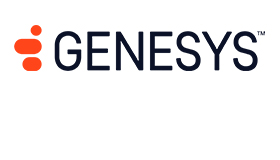Digital transformation has disrupted many industries. In insurance, it’s brought near-instant underwriting, automated claims processing and the rise of “insurtech” startups that challenge traditional carriers.
For an industry rooted in tradition and centuries-old stability, it’s an astonishing amount of innovation in a short period.
The biggest change is yet to come. The proliferation of telematics and other connected devices, combined with recent advances in artificial intelligence (AI), have yielded a new model for insurance products that’s reshaping the industry. It’s a seismic shift away from the repair-and-replace model toward prediction and prevention. And it has big implications for every aspect of the industry.
Partners in Prevention
Insurers provide policyholders with security in the form of compensation in the event of a loss. But that security comes at a substantial cost to the customer and insurer alike; preventing the loss in the first place would offer a better solution for both.
With the latest wave of innovative products, insurers are redefining their relationships with customers to become partners in prevention. By using data to predict the likelihood of an incident that results in a claim, these insurers help customers reduce the probability and severity of damages. It’s a win for everyone.
In vehicles, telematics track and transmit data on use, driving habits and maintenance needs. Most new vehicles come with this capability. For those that don’t, after-market devices are readily available and easily installed.
Armed with this real-time data, insurers update risk assessments regularly to reflect actual driving behavior and the health of the vehicle — and then adjust premiums to reflect the recalculated risk.
Policyholders who drive fewer miles, demonstrate safe driving behaviors and keep their vehicles well maintained can see substantial discounts in their premiums. The potential for that adjustment can encourage customers to change their behaviors in ways that reduce risk and any associated likelihood for claims.
So far, this type of usage-based insurance (UBI) policy is more common in commercial fleet management, but consumers are warming to the idea for their personal coverage.
In the GlobalData 2020 UK Insurance Consumer Survey, more than one-third of respondents indicated they would opt for a UBI policy if the savings reached 30%. For them, that discount is enough to overcome data privacy concerns.
Homeowners’ policies are also being redefined with data from connected devices, including sensors that send alerts when they detect motion, smoke or a leak. Upon receiving an alert, the insurer can offer proactive assistance.
For example, with automatic notification of a possible leak, the insurer can contact the homeowner to help schedule repairs. This proactive service prevents larger losses for both the homeowner and the insurer.
This shift toward a prevention-focused model will have far-reaching implications for every aspect of the insurance industry. As their connections with customers evolve, insurers will face new challenges — but also new opportunities to strengthen those relationships and drive long-term value.
To provide that value, insurers must shift their customer experience (CX) strategy in four important ways.
1. Plan for Proactive Engagement
Today, most interactions between policyholders and their insurers occur at two times — the point of purchase and when an accident or other loss leads to a claim. In between, customers rarely have a reason to reach out.
But prevention-focused products will change customers’ expectations for communication. With premiums tied to usage and behavior data, customers will expect greater transparency on which data points are used and how they impact costs.
And they won’t appreciate surprises when the bill arrives. That means proactive outbound communication will become a critical component of everyday operations. Insurers will need to set up automated notifications to alert policyholders of premium adjustments or other changes.
Proactive engagement can benefit both customers and insurers in other ways, too. By sending messages to acknowledge risk-reducing behavior, such as safer driving, the insurer can encourage the customer to continue those positive habits.
And using outbound digital channels or voice allows the insurer to proactively advise the customer on measures to take to avoid loss, protect property and promote their wellbeing.
2. Enable Rich Self-Service Options
Usage-based insurance products are tailored to each policyholder’s needs and behaviors. And as the range of connected devices expands, available data inputs for these dynamic insurance products will also grow.
With more data, insurers have more granular information that can enable greater personalisation of individual policies. It’s even possible that coverage could be disaggregated and offered a la carte as micro-coverage options that customers could add and drop as often as they’d like.
With so much variability, both policyholders and those just shopping for coverage will inevitably have more questions. As the demand for support grows, self-service options will need to become a key component of the insurer’s CX strategy.
Customers will need access to real-time data to understand their current coverage and the impact of both new options and behavior changes. And they’ll expect a simple automated claims filing process.
Those shopping for a policy will need to compare a wider range of options to understand the coverage and costs of individualised bundles.
Integrating data systems with real-time self-service options will provide policyholders and shoppers with rich information at their fingertips.
Empowering policyholders and shoppers to research options at their convenience will also deflect simple data-driven questions away from employees, freeing them to focus on more complex interactions that require a human touch.
3. Develop Employee Skills Now
As policies become more individualised, customers will expect more personalised support. Employees will need to offer guidance and advice for customers in managing their coverage. With increasing variability in policies, providing that level of personalised engagement will grow more difficult.
Ongoing skill development will need to be a central focus for CX leaders to ensure that employees are prepared to handle the increased complexity of customers’ questions and needs.
And employees who engage with customers will need real-time support during every interaction, including the current details and the full history of the customer’s coverage.
AI applications can help with both ongoing training and employee support during the interaction. Quality managers can use conversation analytics and sentiment analysis to identify training opportunities and provide targeted coaching right away.
And, when integrated with a dynamic knowledge base, speech and text analytics can understand the customer’s intent and provide the employee with useful information, including next best steps, during the interaction.
4. Target Tech Investments to Support Innovation
Dynamic, usage-based insurance is still in its infancy. As the model matures, we’ll likely see a strong push for continued innovation in products offered. In addition, as more customers choose UBI policies and acquire a broader range of connected devices, the data stream will become a deluge.
That’s good news for AI, which runs on data — the more, the better. But this also presents new challenges for insurers.
To support innovative prevention-based coverage, CX leaders need to innovate just as quickly as the insurance products and the consumer tech they depend on — and that will require a layered approach to the technology architecture with a CX platform that can integrate with legacy systems of record.
It’ll also be necessary to have a flexible and composable CX platform to integrate new AI applications and data sources as they arise. Sticking with existing, rigid CX systems will hobble efforts to provide increasingly personalised service and support.
Composable CX platforms will enable the agility needed to manage operations in a highly dynamic and constantly evolving environment.
To stay ahead of the innovation curve, adopt a strategy of targeted technology investments that will accommodate the need for flexibility and innovation — enabling a future-ready composable architecture.
Conclusion
The insurance industry is poised for a revolution of rapid innovation. And data is driving it. But the shift to a predict-and-prevent model will only succeed if it’s supported by an equally innovative and dynamic customer experience.
That creates novel demands for insurers. They’ll need to blend bots with self-service options and human support. And they’ll need to integrate systems to enable data-driven personalised experiences.
By adopting the right strategies now, CX leaders can build their teams and their tech to deliver those experiences for customers. And that will drive value for insurers.
This blog post has been re-published by kind permission of Genesys – View the Original Article
For more information about Genesys - visit the Genesys Website
Call Centre Helper is not responsible for the content of these guest blog posts. The opinions expressed in this article are those of the author, and do not necessarily reflect those of Call Centre Helper.
Author: Genesys
Published On: 26th May 2022
Read more about - Guest Blogs, Genesys






 Genesys empowers more than 8,000 organisations in over 100 countries to improve loyalty and business outcomes by creating the best experiences for their customers and employees. Through Genesys Cloud, the AI-Powered Experience Orchestration platform, Genesys delivers the future of CX to organisations of all sizes so they can provide empathetic, personalised experience at scale. As the trusted platform that is born in the cloud, Genesys Cloud helps organisations accelerate growth by enabling them to differentiate with the right customer experience at the right time, while driving stronger workforce engagement, efficiency and operational improvements.
Genesys empowers more than 8,000 organisations in over 100 countries to improve loyalty and business outcomes by creating the best experiences for their customers and employees. Through Genesys Cloud, the AI-Powered Experience Orchestration platform, Genesys delivers the future of CX to organisations of all sizes so they can provide empathetic, personalised experience at scale. As the trusted platform that is born in the cloud, Genesys Cloud helps organisations accelerate growth by enabling them to differentiate with the right customer experience at the right time, while driving stronger workforce engagement, efficiency and operational improvements. 


































